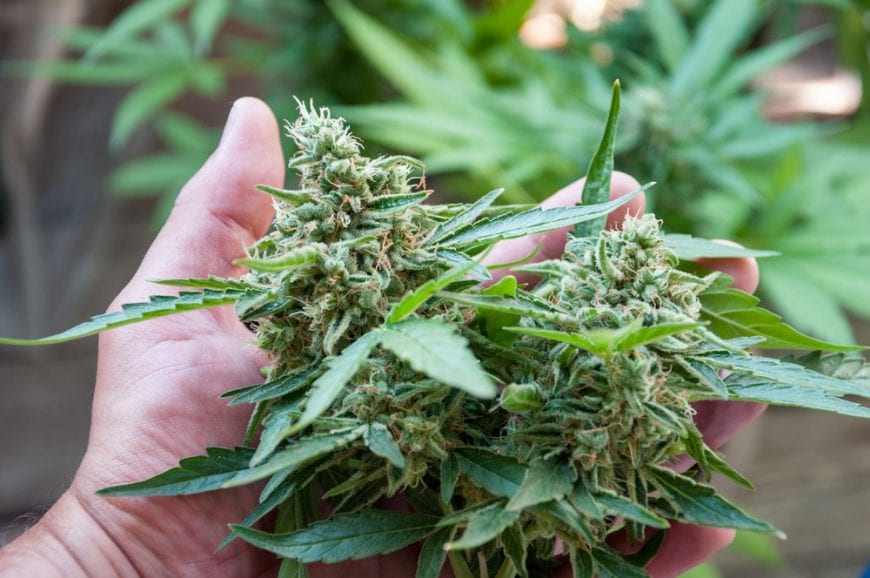One of the best ways to increase bioavailability of cannabis is to use a suppository.
Cannabis suppositories (using the medicine rectally) can deliver cannabinoids in a more potent manner, solve swallowing or smoking problems for certain consumers, and allow consumers greater control over their dosage. Although this may all sound like another cash grab — just another way to cram cannabis or CBD into a product that doesn’t need it — but that’s not the case. Rectal suppositories are common in modern medicine. These can target certain diseases better than oral medicine, and can be consumed even when a patient is regularly throwing up.
So, before writing off rectal cannabis suppositories as simply too weird, consider a few facts.
- First, suppositories allow people to take THC without intense psycho-activity. This opens up a whole new world of treatment options for patients who feel too anxious to take THC-infused medicine, or who need to consume high amounts of THC but can’t cope with the side effects.
- Second, the pharmacokinetics (the science of how a medicine interacts with the body) work different in rectal suppositories. Cannabis consumed this way can offers greater relief to the stomach and GI tract of the body. These may help consumers with issues like Crohn’s disease or hemorrhoids more than any other method of consumption.
- Third, these are very economical. Cannabis suppositories allow medicine to interact with the endocannabinoid receptors in the colon while bypassing the liver, which often filters out a lot of active cannabinoids taken orally. That means less cannabis is needed and the dosage can be repeated for consistency without factoring in how much work the liver is doing.

The Science Behind Cannabis Suppositories
Although cannabis treats a wide range of illnesses and disorders, how the medicine is consumed can change bioavailability and thus, efficacy. Physicians often weigh the pros and cons of each consumption method when considering how to prescribe a medicine. They consider the pharmacokinetics, which describe how the drug enters the blood stream, and where it interacts with the body.
Cannabis, for example, has low bioavailability when consumed orally, according to research published in Clinical Pharmacokinetics (2012). The liver will break down some of the active ingredients and dispose of them as waste before these ever have a chance to get into the blood stream. Scientists call this the “first-pass effect” of the liver. The pharmacokinetics of orally consumed cannabis are also highly variable among individuals, and the uptake of active ingredients is relatively slow.
Suppositories, on the other hand, directly target the CB1 and CB2 receptors in the colon and intestines. This can bring great relief for patients with GI tract disorders — the kind of relief that may not be as fast-acting or effective when cannabis is taken orally.
Further, patients who have lung issues or are confined to public spaces, like hospitals, may not be able to smoke cannabis and need alternative ways to receive medicine. One clinical study published in the International Journal of Pharmacology and Therapeutics (1996), found THC administered via rectal suppository was twice that of THC taken orally. And it did so without any physical or psychological side effects. The study’s authors noted, “No differences in the concentration ability, mood, and function of the cardiovascular system could be observed after administration of THC.”
If Suppositories Don’t Produce a High, Does the THC Still Work?
The claim that cannabis suppositories with THC don’t get people really high is a clue that this method of administration probably doesn’t reach the entire body. But that can be a good thing! Many patients claim they receive some of the euphoric effects, but these are greatly muted.
Cannabis suppositories, while they may be potent, are best at treating localized issues — those close to the intestines. They’re not as effective at treating conditions that manifest further from the site of consumption, such as headaches. Before getting into the science, it’s worth noting that research on cannabis suppositories is scarce. What little research there is comes from animal testing. That mean human trials are not complete and these are not necessarily guidelines for human treatment.
THC Does Not Absorb Rectally
What is clear, however, is that THC alone does not absorb rectally. That was proven by research published in the International Journal of Pharmaceutics (1995). In order for the body to use THC, it must convert it into a substance called THC-hemisuccinate, which the body can absorb. Once it absorbs, the body naturally re-converts THC-hemisuccinate back into regular THC. That’s the way this research on monkeys proves it works, at any rate. Anecdotal evidence suggests it works similarly in humans, but no published research has yet to confirm it.
All we have are reports that patients indeed benefit form cannabis suppositories in terms of pain and spasm relief. Scientists don’t fully understand the exact mechanism behind it.

How to Get the Most from Cannabis Suppositories
Consuming cannabis this way is not the same as oral cannabis taken orally. Think of it more like applying topical medicine to the GI tract. Patients report cannabis suppositories work wonders for pain associated with conditions such as irritable bowel syndrome, hemorrhoids, digestion, anal fissures, Crohn’s disease, lower back pain, restless leg syndrome, prostate illnesses, and sciatica.
Smart consumers shop for cannabis suppositories the same way they look for oral or smokable cannabis. They look for third-party verifications, high-quality ingredients, and aren’t afraid to spend more money to get a better product. Just because the cannabis is going somewhere uncomfortable doesn’t mean consumers should skimp on quality. Like most things in life, you get what you pay for.





